今回と次回の記事で、行書の「終」を2種類紹介します。今回はそのPart.1です。
こんかいとじかいのきじで、ぎょうしょの「終(しゅう)」をにしゅるいしょうかいします。こんかいはそのパートワンです。
In this and the next article, I introduce 2 types of 終(shuu) in semi-cursive script. This time is the Part.1.
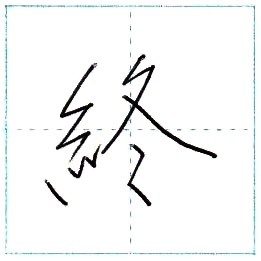
スポンサーリンク
単語例(たんごれい)
Word examples
終日 [しゅうじつ shuu jitsu] = all day long
最終日 [さいしゅうび sai shuu bi] = last day
最終回 [さいしゅうかい sai shuu kai] = final episode, last inning
終点 [しゅうてん shuu ten] = final stop, terminal station
ターミナル駅 [ターミナルえき ta ー mi na ru eki] / 終着駅 [しゅうちゃくえき shuu chaku eki] = terminal station
スポンサーリンク
書き順(かきじゅん)
Stroke order
1. 最初の線は、1画で書きます。
さいしょのせんは、いっかくでかきます。
Write the first line with one stroke.
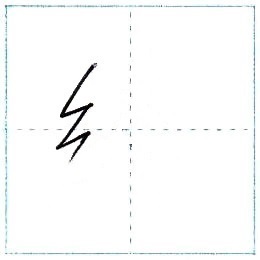
1-1.
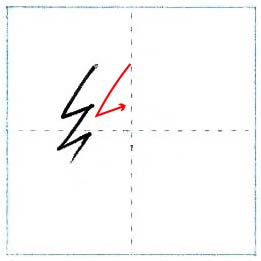
1-2.
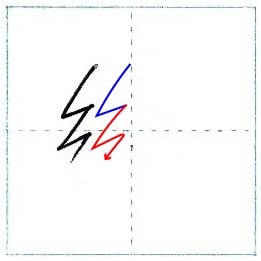
2.
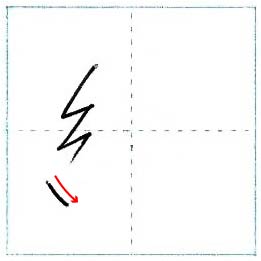
3.
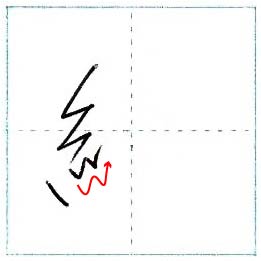
4. 次の線も、1画で書きます。
つぎのせんも、いっかくでかきます。
Write the next line with one stroke, too.
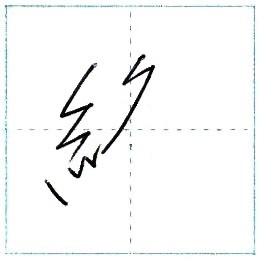
4-1.
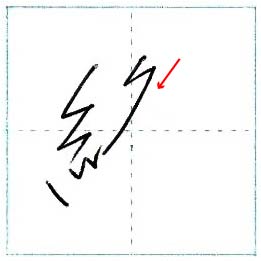
4-2.
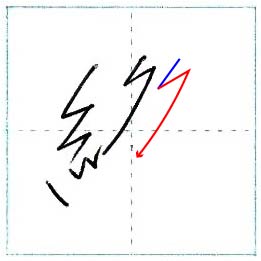
5.
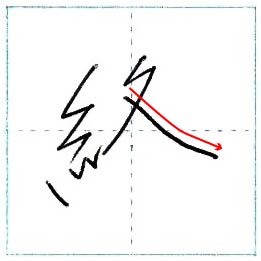
6.
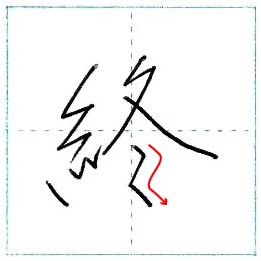
7. 完成(かんせい) Finish

公開日/post 2020.05.31
更新日/update 2020.05.31
スポンサーリンク
